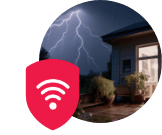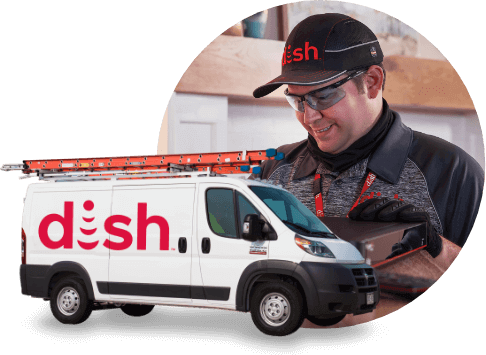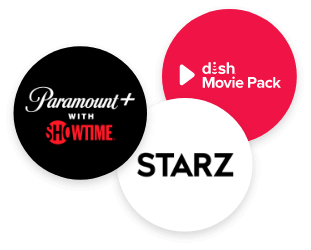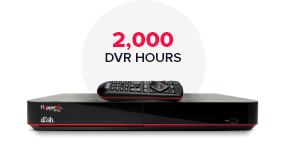Fiber Networks During Peak Usage Times (and How They Handle Traffic)
Table of Contents
Ever notice how your internet seems to crawl during those busy evening hours when everyone’s streaming Netflix, hopping on video calls, or gaming online? You’re experiencing what’s known as network congestion during peak usage times. While traditional internet services often buckle under this pressure, fiber networks during peak usage times maintain their lightning-fast speeds regardless of how many people are online simultaneously.
Understanding why this happens (and how fiber technology solves these frustrating slowdowns) can help you make an informed decision when you compare internet providers for your home or business needs.
What Are Peak Usage Times and Why Do They Matter?
Peak usage times, often called “internet rush hour," typically occur during weekday evenings between 6 PM and 11 PM when most people return home from work and school [1]. However, with the rise of remote work and online learning, these peak periods have become less predictable and can now happen throughout the day.
During these busy periods, millions of users simultaneously stream high-definition videos, participate in video conferences, download large files, and engage in bandwidth-intensive gaming. This surge in demand can overwhelm traditional internet infrastructure, leading to slower speeds, buffering, and connection drops that disrupt your online activities.
The impact becomes even more pronounced in densely populated areas like apartment complexes, condominiums, or neighborhoods where many residents share the same internet service provider. When you compare internet plans from different providers, understanding how each technology handles peak usage becomes crucial for making the right choice.
How Traditional Internet Technologies Struggle During Peak Times
Peak times can reveal significant weaknesses in traditional internet technologies, impacting both reliability and performance.
Cable Internet and Shared Bandwidth
Most cable internet services operate on a shared network model, where multiple households in a neighborhood share the same bandwidth pipeline. Think of it like a highway during rush hour—the more cars (users) trying to use the same road (network), the slower everyone moves.
During peak usage times, cable providers often resort to throttling, which is the intentional slowing down of internet speeds to manage network congestion. This practice helps prevent complete network overload but results in frustratingly slow connections for users who need reliable speeds for work, entertainment, or communication.
DSL Limitations
DSL (Digital Subscriber Line) technology, which transmits data over traditional copper telephone lines, faces even greater challenges during peak periods. The copper infrastructure simply wasn’t designed to handle the massive data demands of modern internet usage. As more users in an area go online simultaneously, DSL speeds can degrade significantly, making activities like video streaming or large file uploads nearly impossible.
Fiber Networks During Peak Usage Times

The fiber advantage
Fiber networks are built to deliver consistent, high-speed internet performance even during the busiest usage periods.
The Speed of Light Advantage
Fiber networks during peak usage times maintain their superior performance because they transmit data using light signals through specially designed glass cables. This difference allows data to travel at approximately 70% the speed of light—far faster than the electrical signals used by copper-based technologies like cable and DSL.
This speed advantage means that even when network traffic increases during busy periods, fiber networks can handle the increased demand without the dramatic slowdowns experienced by other technologies. A task that might take several minutes on a congested cable network, such as downloading a large file or streaming a 4K movie, can be completed in seconds over fiber.
Massive Bandwidth Capacity
Fiber optic cables have an inherently higher bandwidth capacity compared to traditional copper cables. This expanded capacity means fiber networks can accommodate many more users and data-intensive activities without experiencing the bottlenecks that plague other internet technologies.
When you compare internet providers and their ability to handle multiple devices and heavy usage, fiber consistently outperforms alternatives. A single fiber connection can easily support a household with numerous connected devices—smartphones, tablets, laptops, smart TVs, gaming consoles, smart home devices, and more—all operating simultaneously without performance degradation.
Dedicated Connections vs. Shared Networks
Unlike cable internet, which shares bandwidth among multiple users in a neighborhood, fiber typically provides dedicated connections to each customer. This means the speed you pay for is yours alone, unaffected by your neighbors’ internet activities.
This dedicated approach ensures consistent performance regardless of peak usage times in your area. Whether it’s 3 PM on a Tuesday or 8 PM on a Friday night, your fiber connection delivers the same reliable speeds you expect.
Symmetrical Upload and Download Speeds
Traditional internet services typically allocate more bandwidth to downloads than uploads, assuming most users consume more content than they create. However, modern internet usage patterns include significant uploading activities—video calls, cloud backups, content creation, and file sharing.
Fiber networks provide symmetrical speeds, meaning your upload speeds match your download speeds. This balance becomes crucial during peak usage times when multiple household members might be video conferencing for work while others stream content or backup files to the cloud.
Advanced Network Management Techniques
Good network management is key to keeping things running smoothly and performing at their best in today’s digital world.
Quality of Service (QoS) Optimization
Fiber providers like Fidium Fiber employ sophisticated Quality of Service protocols that intelligently manage network traffic without resorting to throttling. These systems can prioritize critical applications—such as video calls or online gaming—while ensuring all users receive optimal performance.
Peering Agreements and Content Delivery
Modern fiber networks utilize strategic peering agreements with major content providers and streaming services. These partnerships create direct pathways for popular content, reducing the distance data must travel and minimizing congestion points. When you’re streaming from Netflix, YouTube, or other major platforms during peak hours, these optimized routes ensure smooth, uninterrupted viewing.
Network Redundancy and Load Distribution
Fiber infrastructure typically includes multiple pathways and redundant connections that automatically distribute traffic across different routes when certain areas experience high demand. This intelligent load balancing prevents any single point in the network from becoming overwhelmed during peak usage times.

Real-world performance differences
The performance gap between fiber and traditional internet becomes most apparent during peak usage periods. While cable internet users might experience speeds dropping to 25-50% of their advertised rates during busy evenings, fiber users consistently receive their full subscribed speeds.
For example, if you’re paying for 200 Mbps cable internet, you might see actual speeds of 50-100 Mbps during peak hours. In contrast, a 200 Mbps fiber connection typically delivers the full 200 Mbps regardless of the time of day or network congestion in your area.
This consistency makes fiber particularly valuable for households with multiple users engaged in bandwidth-intensive activities simultaneously—such as remote workers on video calls while family members stream 4K content or engage in online gaming.
Making the Right Choice: Internet Comparison Considerations
When you compare internet plans and internet prices, it’s essential to consider peak-time performance alongside advertised speeds. The best internet providers offer transparent information about their network management practices and performance expectations during busy periods.
Key Questions to Ask When You Compare Internet Providers:
- Network Infrastructure: Does the provider use fiber, cable, or DSL technology?
- Peak Performance Guarantees: What speeds can you expect during busy evening hours?
- Data Caps and Throttling: Are there limitations on data usage or speed reductions during peak times?
- Upload Speeds: Do upload speeds match download speeds, or are they significantly slower?
Why Fidium Fiber Stands Out
When searching for the best internet in your area, Fidium Fiber’s 100% fiber optic network delivers unmatched performance during peak usage times. Our infrastructure is specifically designed to handle the demanding internet needs of modern households and businesses without compromising on speed or reliability.
Unlike providers that mix fiber and copper technologies or resort to throttling during busy periods, Fidium Fiber maintains consistent, high-speed connections 24/7. Our symmetrical speeds ensure that uploading important work files happens just as quickly as downloading your favorite shows.

The future of internet usage
As our reliance on internet connectivity continues to grow—with emerging technologies like virtual reality, 4K streaming, smart home automation, and cloud-based everything—the demands on network infrastructure will only increase. Fiber networks are uniquely positioned to handle these evolving needs without requiring costly infrastructure overhauls.
When you invest in fiber internet today, you’re not just solving current peak-time congestion issues; you’re future-proofing your connection for the next generation of internet applications and services.
Making the Switch
If you’re tired of dealing with slowdowns during peak usage times and want to experience the best internet performance available, it’s time to explore fiber options in your area. When you conduct an internet comparison, the advantages of fiber technology become clear—especially when it comes to handling the high-demand periods that frustrate users of traditional internet services.
Ready to experience internet that doesn’t slow down when you need it most? Enter your zip code below to discover Fidium Fiber’s availability in your area and join the thousands of customers who’ve made the switch to truly reliable, high-speed internet.
Sources
[1] Reddit. “Global Internet Usage Based on Time of Day."












 Call
Call 

 Access Your Account
Access Your Account